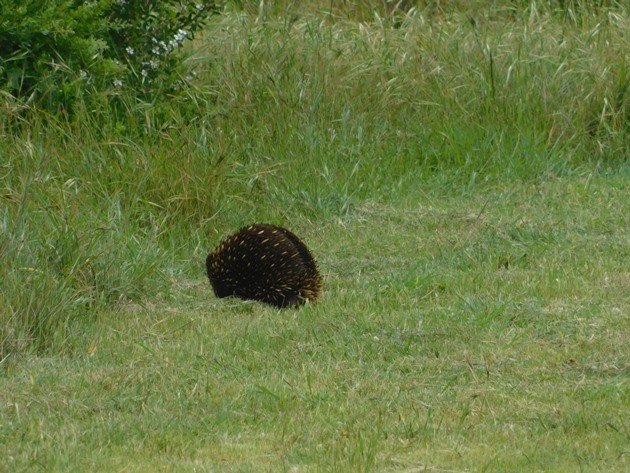
When I realised that this weekend would be my 500th post for this website I thought I could broaden the “birding” topic to “egg-laying” topic. In Australia we have two egg-laying mammals. These are the Platypus and the Echidna. We have observed a lot more Echidna in Australia than Platypus. Platypus prefer a water habitat and their location in Australia means we have rarely travelled to where they live.
During our recent visit to Victoria Echidna were often encountered. They openly fed during the daylight hours on ants. Any rustling of leaves is worth stopping for anywhere. It could be a bird, lizard or a mammal! The Echidna in the header photo was busy searching through the grass and stopped when it heard us. It briefly pulled its nose in and then carried on with its search for food. The spines are long hollow hair follicles and there is variation in the colour and density of the spines across Australia depending on the environment.
Echidna from above
Echidna
On Boxing Day, when we found the first Gang-gang Cockatoos for our 2019 bird list, we encountered an Echidna. It was not concerned about us, because we kept our distance and let it wander into the bush. Echidna use their spines as defence and roll up as tight as they can to protect themselves. I don’t have any photos of a tightly curled Echidna, because we didn’t frighten them with our presence by keeping our distance.
Echidna
Another encounter I had with an Echidna was close to where we were staying in Foster. I heard the familiar digging sound and approached slowly. The Echidna was very busy looking for food on the forest floor. The light was not ideal, but I took a few photos and enjoyed watching this amazing creature.
Rear view of Echidna including tail
Echidna
As most of you know, we do have some incredible birds in Australia as well as mammals. As if this mammal was not odd enough with its spines and being an egg-laying mammal it also has a four-headed appendage.
Once again this week I would like to wish you and your families and friends all good health. Observe what you can through your windows, catch up on reading those field guides and reach out to those that need your support.


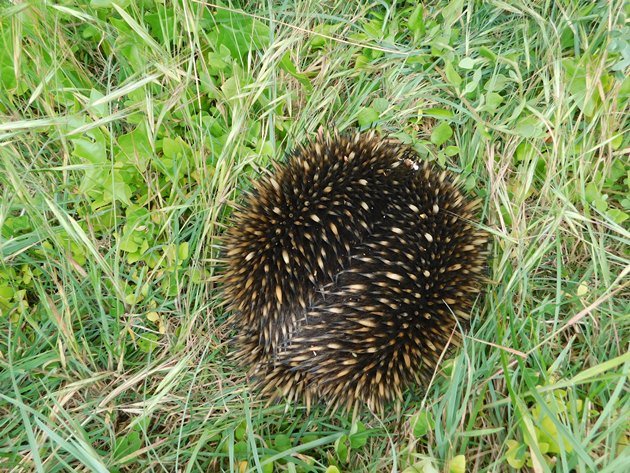
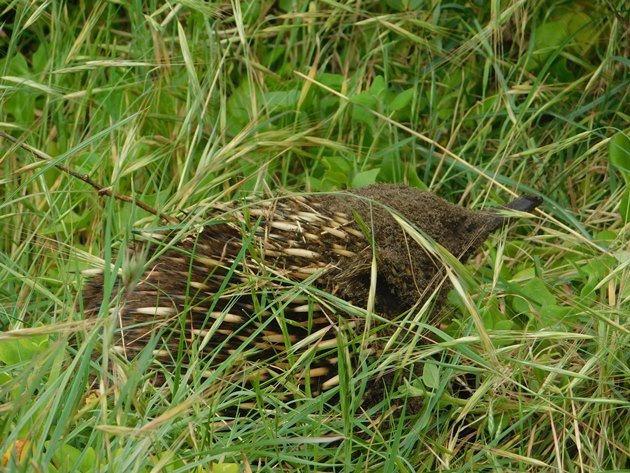
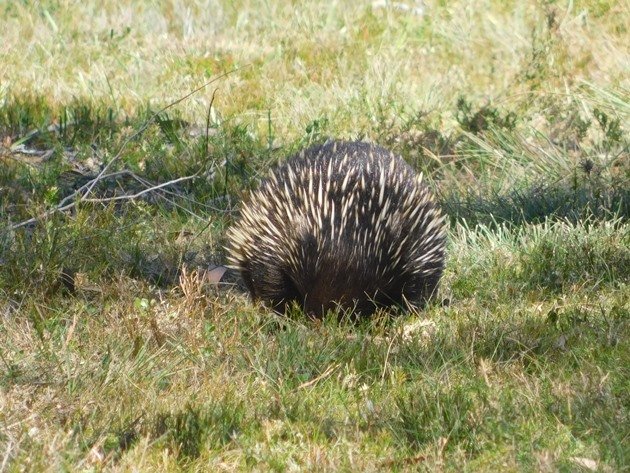
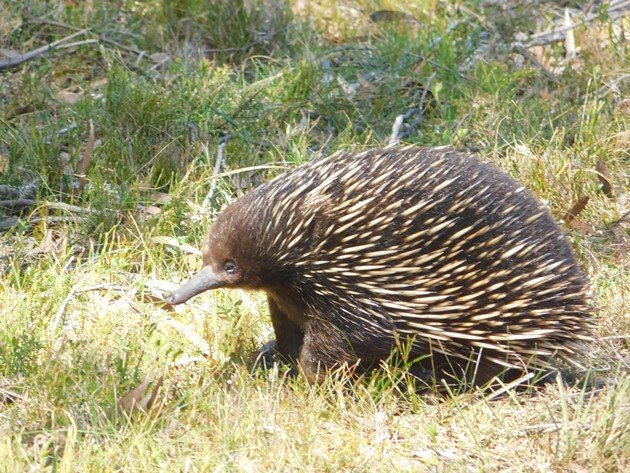
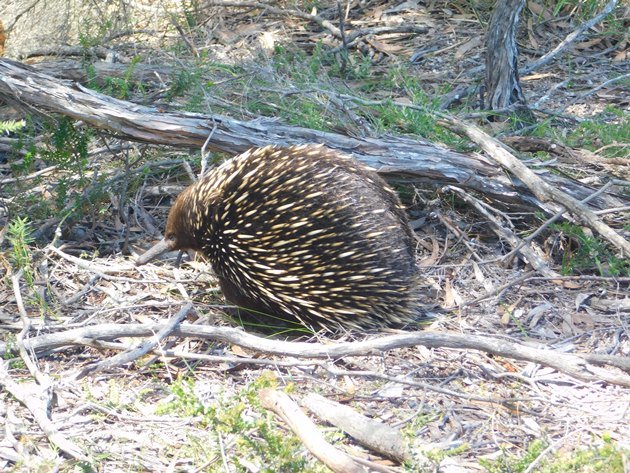
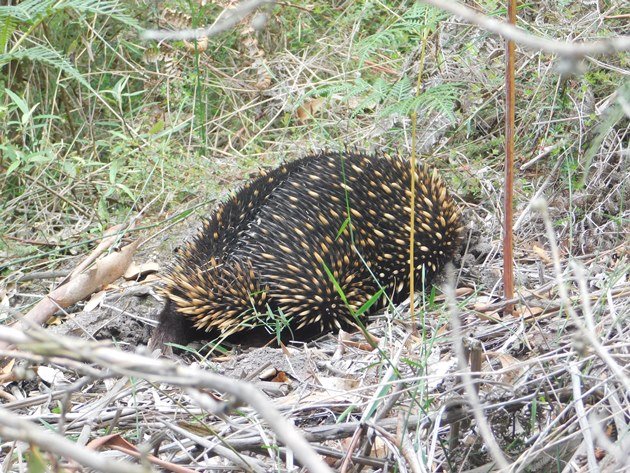
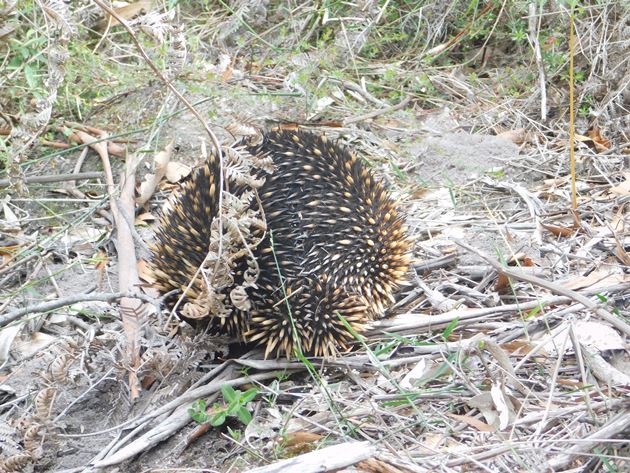
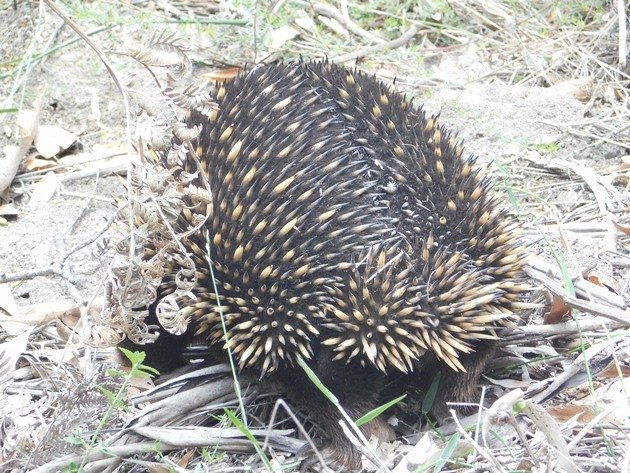
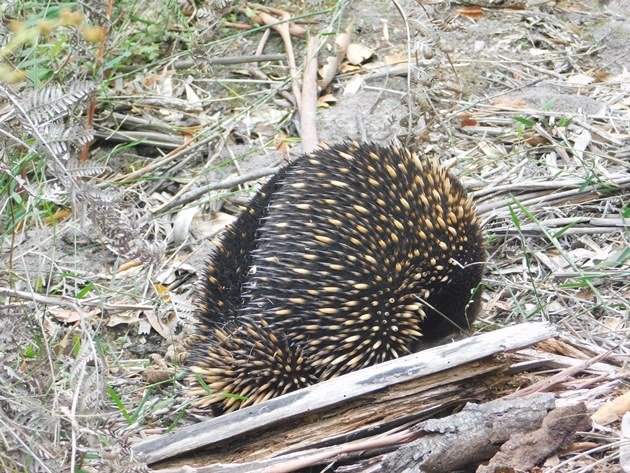
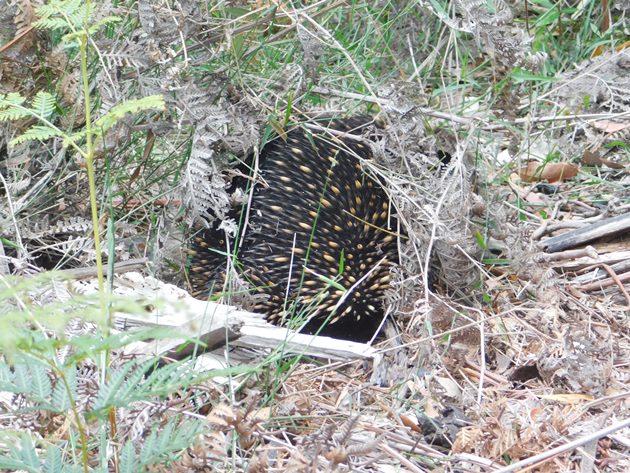
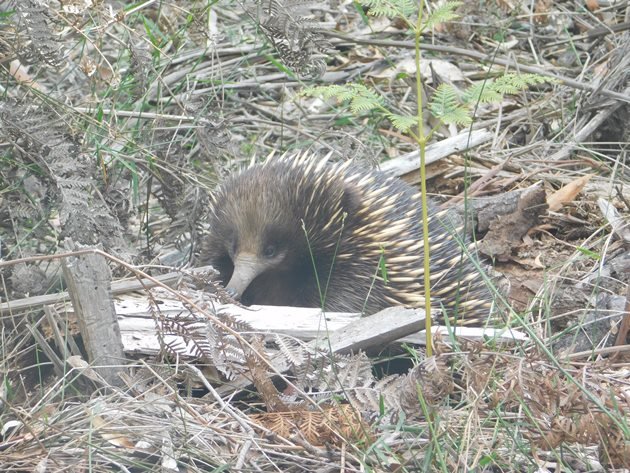











Congratulations on your 500th post, Clare! You are such a fabulous correspondent for 10,000 Birds. I love this echidna essay for your 500th, with fascinating facts I hadn’t known. Your photos show some wonderful details, too. Years ago we were driving on a back road on Kangaroo Island and had to wait a long time for an echidna to finish crossing the road, right in front of us. They are magical animals. Thank you for this post!
500 posts!?!?!
Huzzah!
Thanks for sticking with us for so long, Clare!
Thanks!